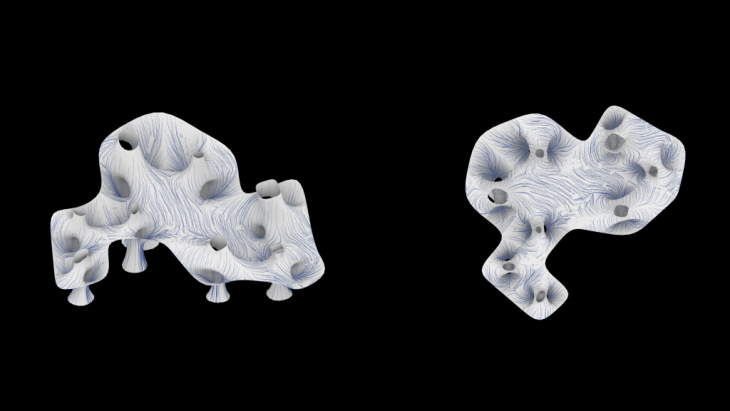MANIFESTO
Our project foresees the design of an experimental public vertical farm in Poblenou. The focus of our project is one portion of Poblenou which is characterized by low-middle class residential buildings. We want to introduce an experimental and innovative public space where people can grow and consume their products. The concept is to reverse the industrial chimney into a machine that collects water and hosts vertical farming.
CONTEXT
Area
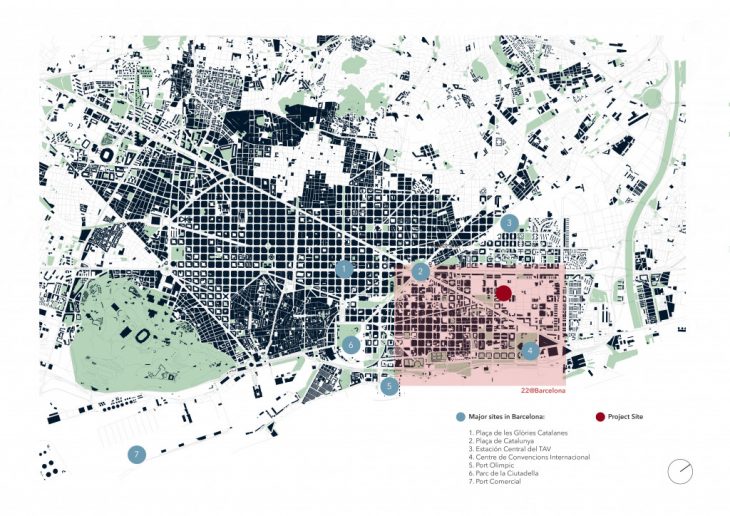
The site is located in Provencal de Poblenou which is part of the former industrial district of Poblenou, close to Plaza de las Glories Catalanes and Parc de la Ciutadella. The area is known today as 22@district.
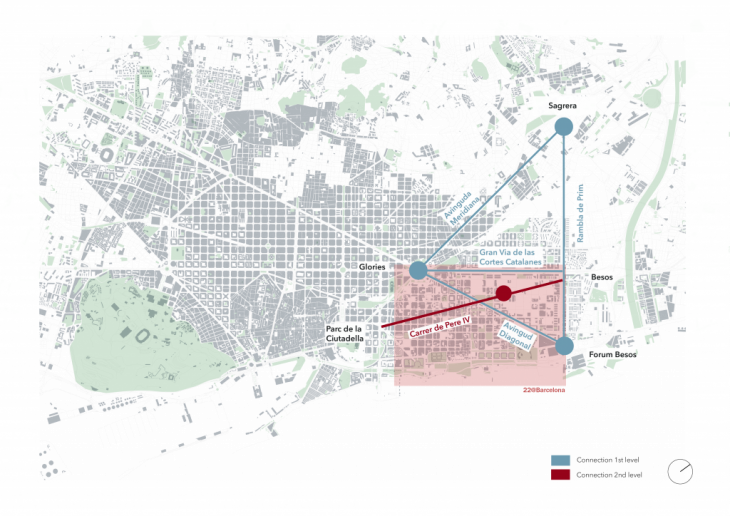
The main connections of the area are Gran Via de Las Cortes Catalanes and Avinguda Diagonal. The latter crosses Carrer de Pere IV which is the main access to our site.
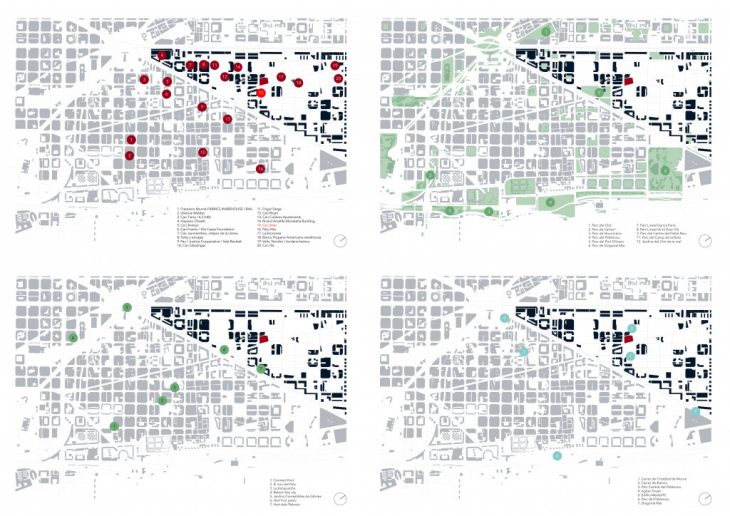
A) Industrial sites B) Green spaces C) Urban farms D) Water recycling sites
Pere IV is a historical axis of Barcelona. In the XIX century was connecting the industries to the town of Mataró. After the industrial activity subsided, many factories became empty (map A). In 2000 the city made a special plan for the area which is called 22@district. It foresees the conversion of the industrial area to an innovative hub with three main points: conservation of the industrial heritage, development of infrastructures, and sustainable strategies.
A significant part of this strategy involves the promotion of urban farms and the development of water recycling systems. The “Pla Buits of the Barcelona City Council” creates a network of urban gardens to recover disused urban spaces. We mapped a few of them in the surrounding of our site such as Refarm the city and Connect Hort (map C).
Moreover, the city developed different projects for responsible use of water in the city such as public water management, potable fountains, sanitation, alternative water resources (map D). This map shows some of those projects such as the Torre Glories which recycle rainwater and the ones in Carrer de Bolivia and Cristobal De Moura, next to our site with the SUDS (sustainable drainage system).
From the analysis of the green spaces (map B), we can notice a lack of green areas in the central part of the area compared to the coastal part of the city.
Site

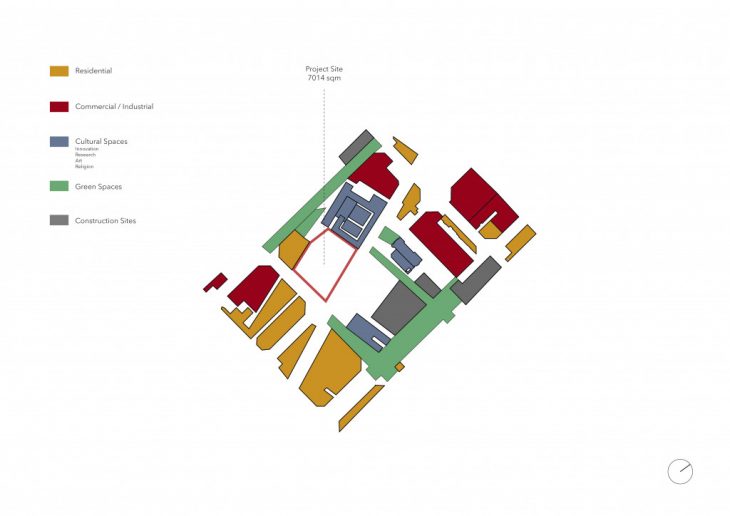
The site is around 7000 sqm and is located in the corner of Carrer de Fluvia and Carrer de Pere IV. The site is surrounded by residential, industrial, and cultural buildings. As well as new green spaces and construction sites. Situated right across from our site is a very important building: Ca L’Alier. It was converted from an industrial building to an international meeting space hosting events around urban innovation.
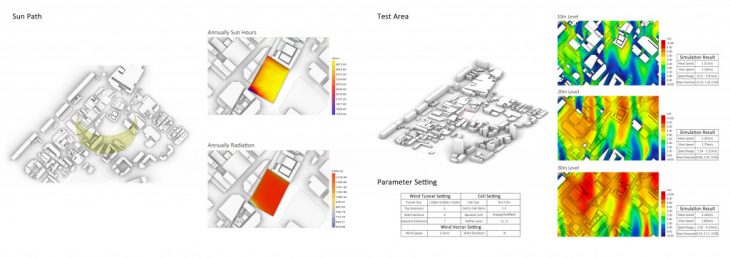
The environmental analysis of our site revealed constant solar radiation throughout the day. The site experiences constant winds, coming from the south.
OBJECTIVES
- Create a radiative passive water collecting system.
- Implement urban farming.
- Create a space where the locals can learn about new farming techniques.
- Produce food.
- Create a public space that can host a variety of activities.
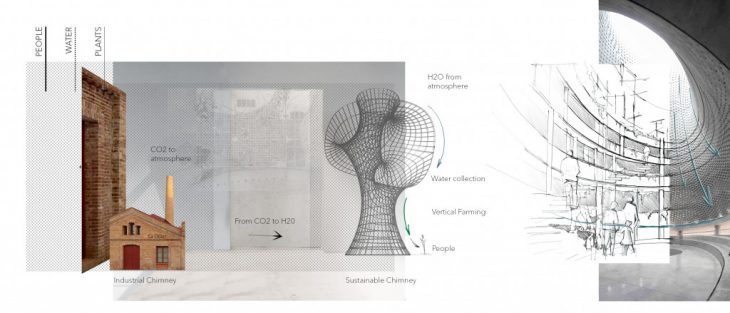
The concept is to reverse a traditional industrial chimney that releases CO2 and substitute its harmful function with a sustainable one. That way we create a reversed chimney that collects water and hosts vertical farming.
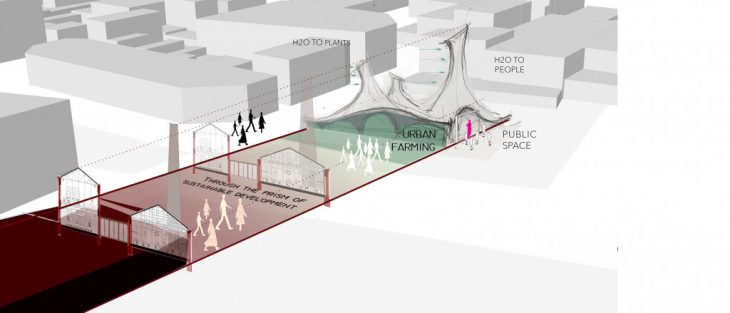
The area underneath our structure is a public space, where a variety of activities can be implemented. It can function as an educational space where the locals are taught vertical farming techniques, a children’s playground, a place for public lectures, or as a site for art installations.
The collected water is guided to an underground water tank that supplies water for vertical farming, which in turn can benefit people with a rich harvest. Any excess water can be guided to the existing sustainable drainage system (SuDS) which surrounds our site.
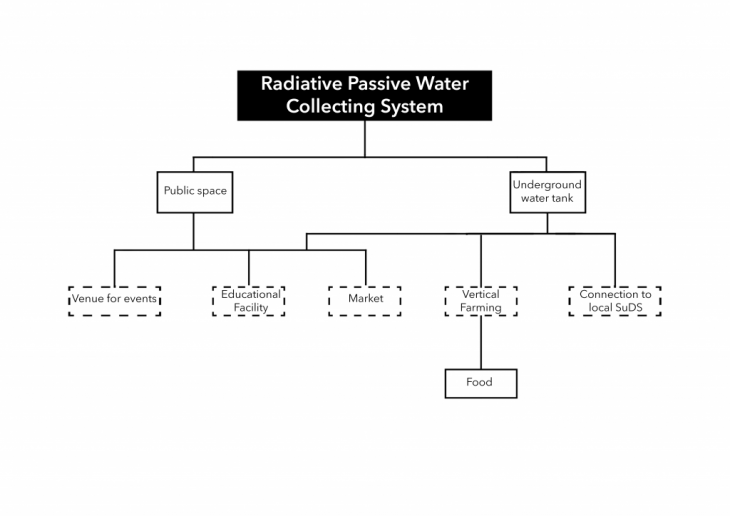
WATER COLLECTION
- 14000 km3 of water in the atmosphere
- 1200 km3 water in the earth
- Dew collection is an under-explored alternative source of fresh water.
- Radiative (passive) or active.

Critical factors for dew collection
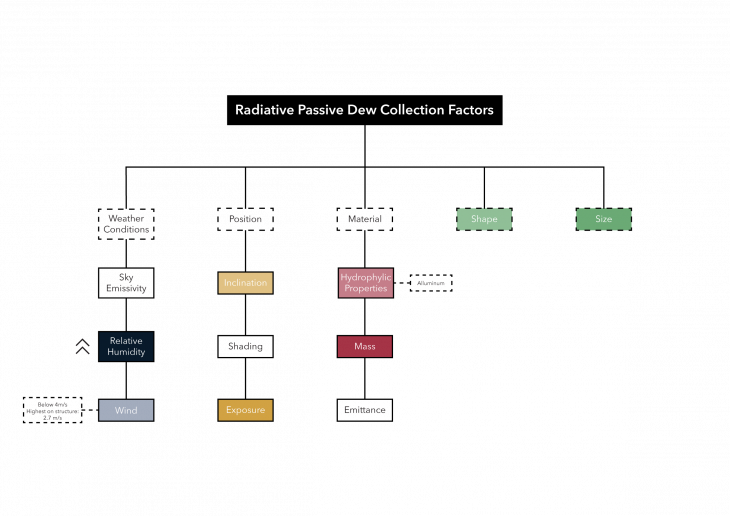
The most important factors contributing to the water collection performance of a passive system are:
- Relative humidity
- Wind: wind is necessary in order to bring the humid air on the surface, but too strong wind can influence the heat exchange between the surface and the air, thus hindering the condensation process (wind must be below 4m/s).
- Inclination: the surface must be inclined (approx. 30°).
- Exposure
- Surface: the surface must be smooth to allow for an easy flow of water. It is important to be constructed with a material of high emissivity.
- Shape: a funnel-shaped surface collects more water.
Reference projects
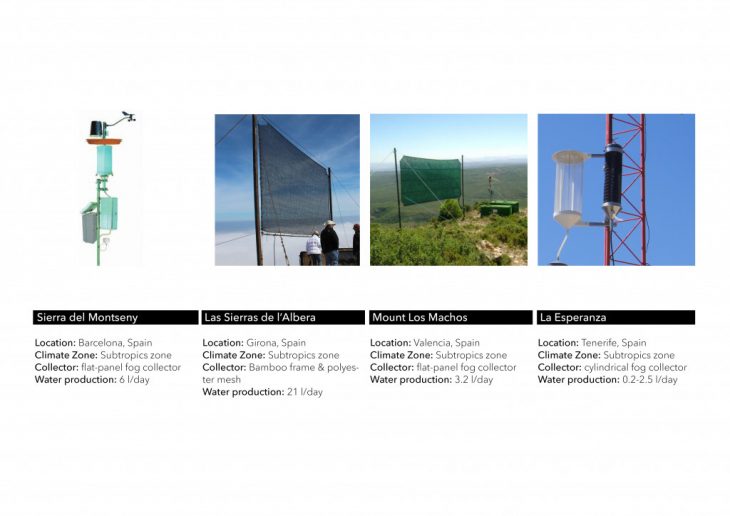
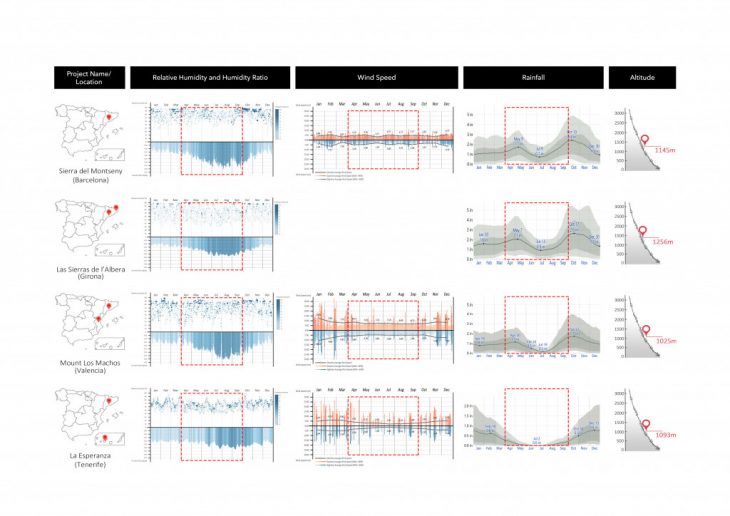
For water collection projects in Spain were studied. While they are using different water collecting technologies and are situated in rural areas, they give us insight into the water collecting process in the local climate.
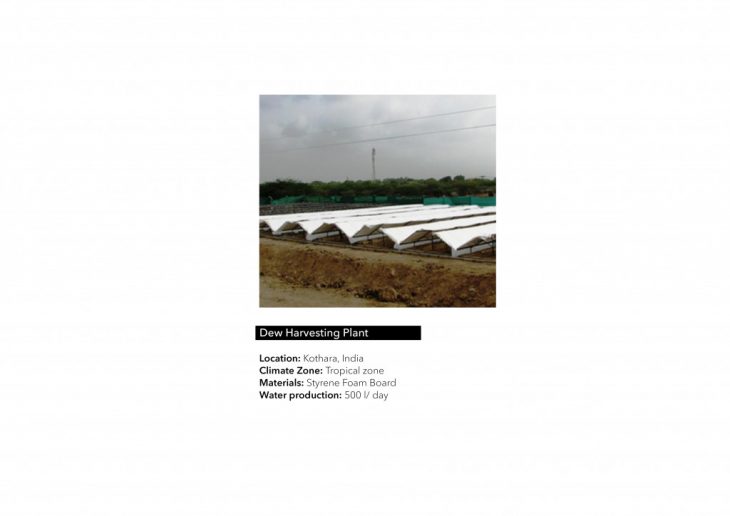
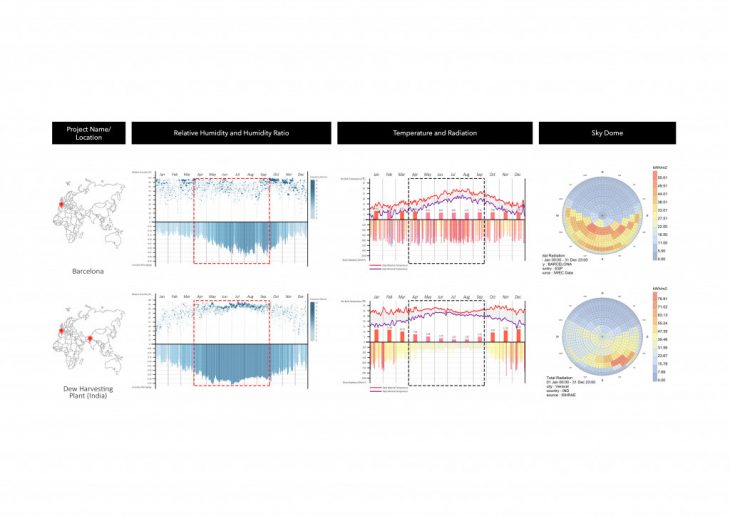
A passive water collecting system in India was also studied as an example
VERTICAL FARMING SYSTEM
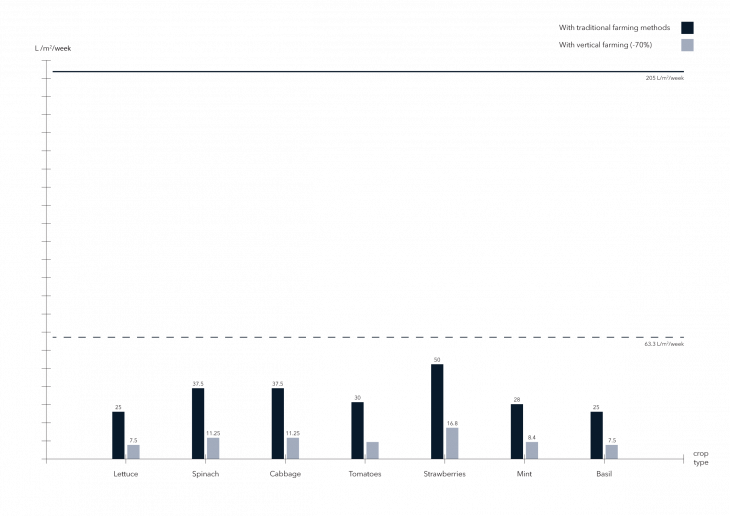
We chose vertical farming as it requires 70-90% less water compared to traditional farming techniques. Also, it allows for more efficient use of the limited urban surface area that is available for farming.
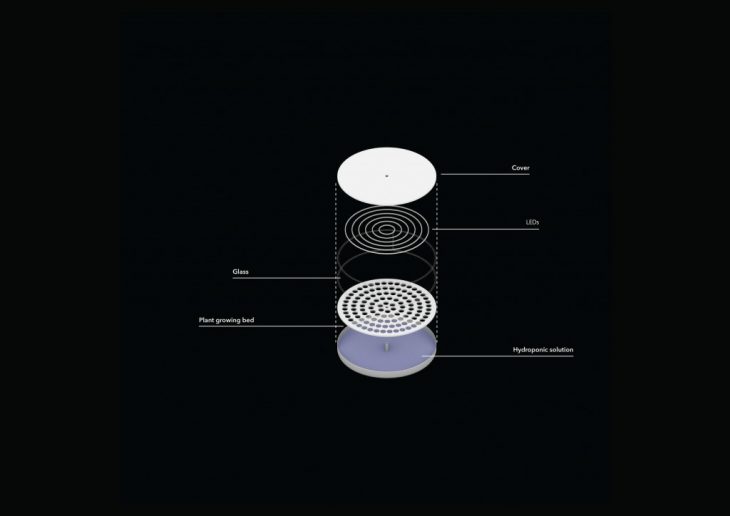
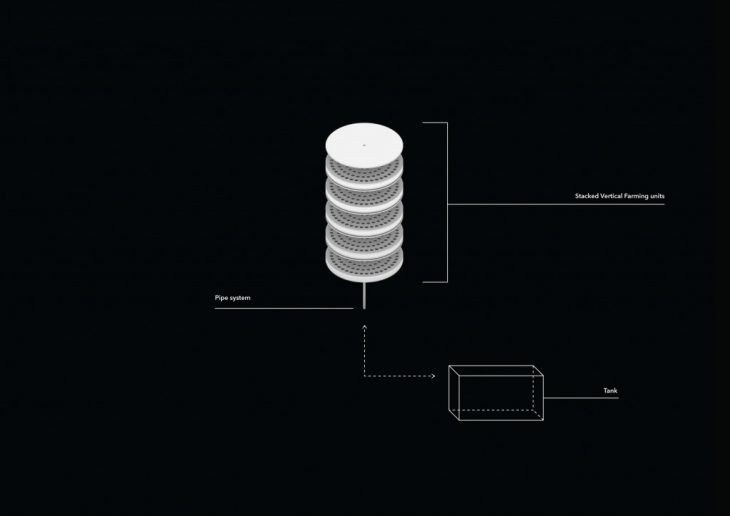
We designed a cylindrical controlled environment (CE) unit for growing plants. A growth bed is suspended above the hydroponic solution that carries the necessary nutrients. The plants are illuminated by rows of LED lights. A centrally located system of pipes allows for the circulation of water between the CE units and the central storage tank.
These units can be stacked and form a tower with a common system of pipes in the center.
FORM-FINDING
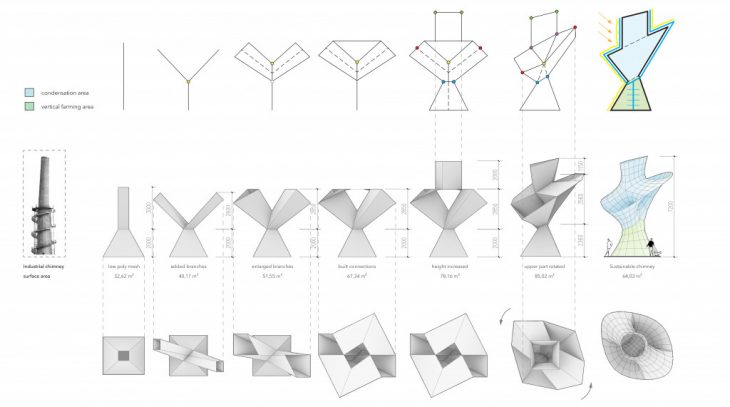
Form evolution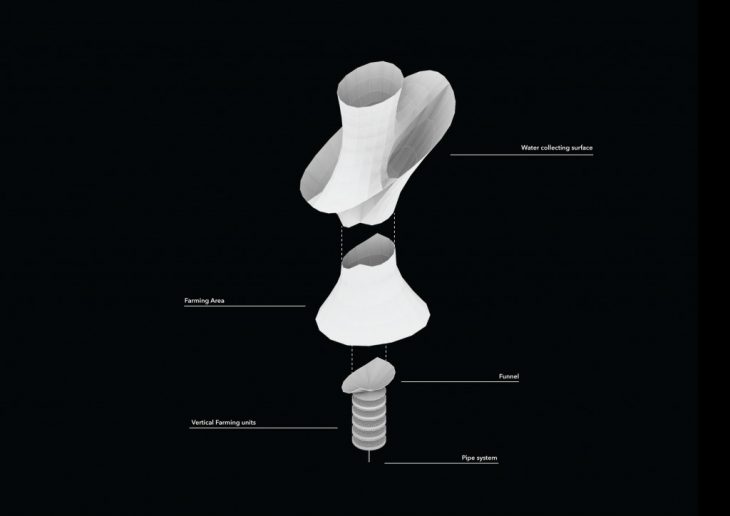
Aggregations
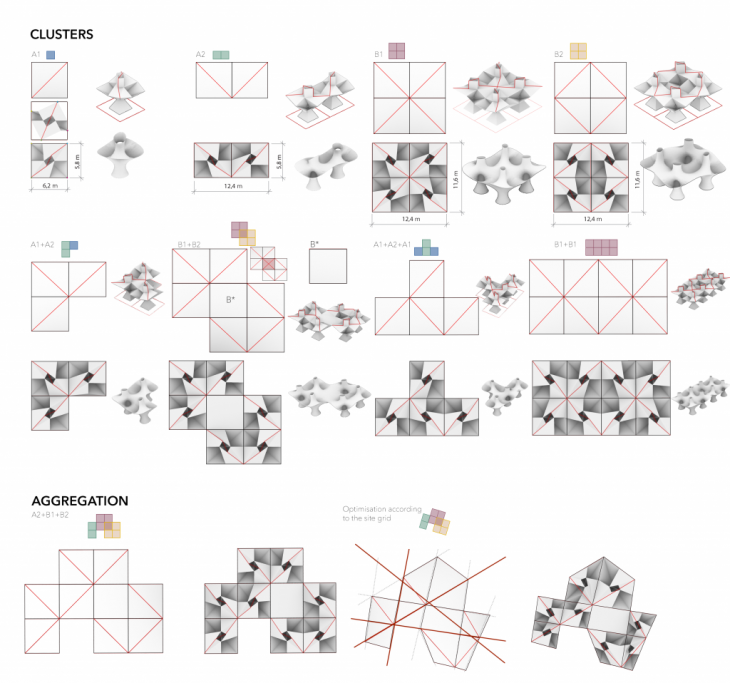

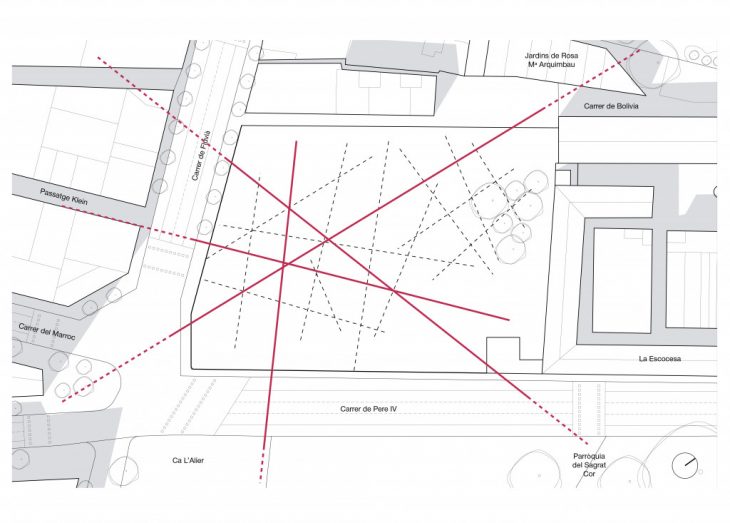
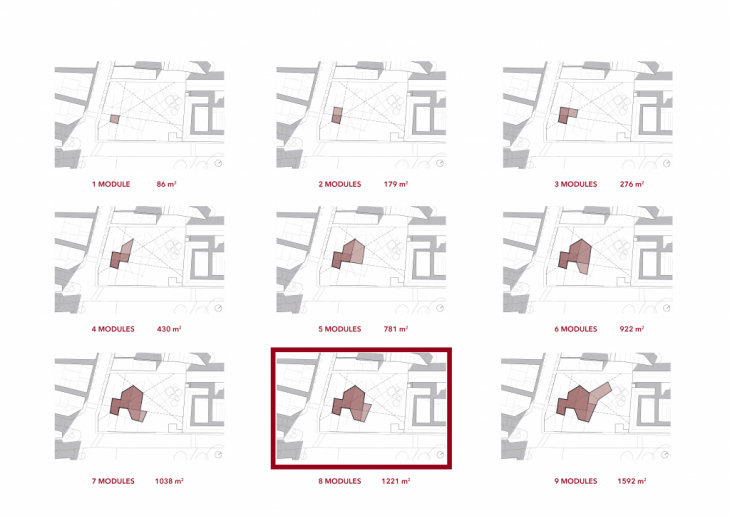
Plans
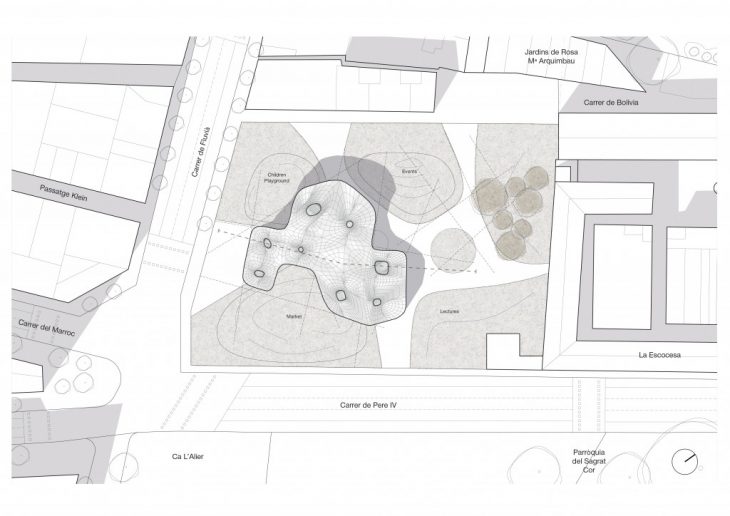
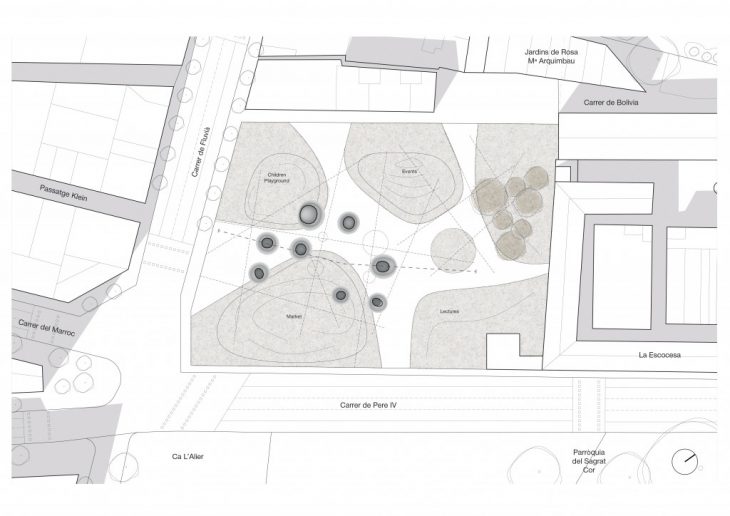
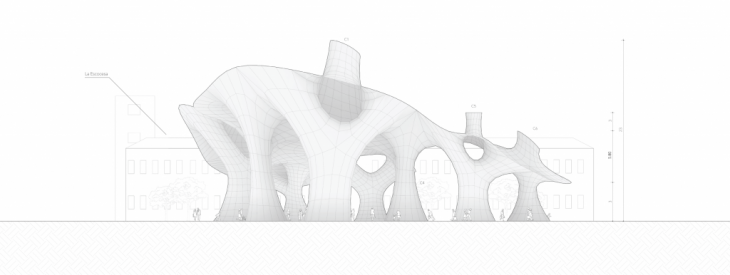
Western elevation
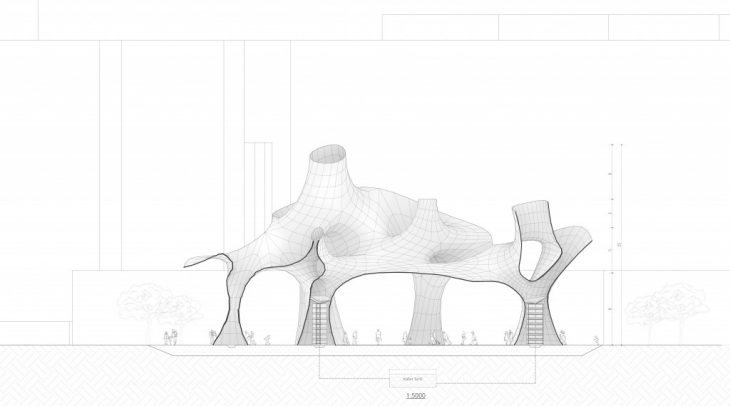
Section
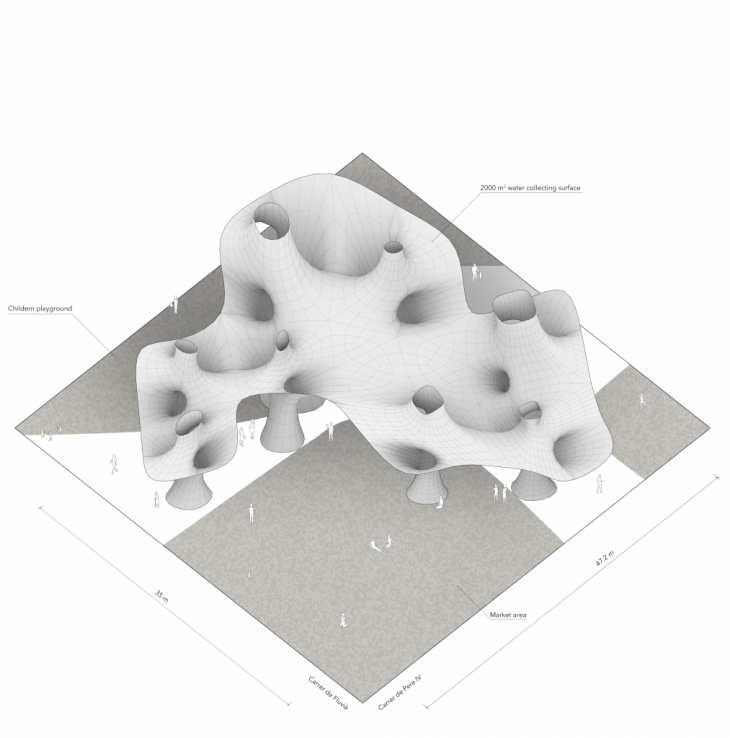
Axonometric
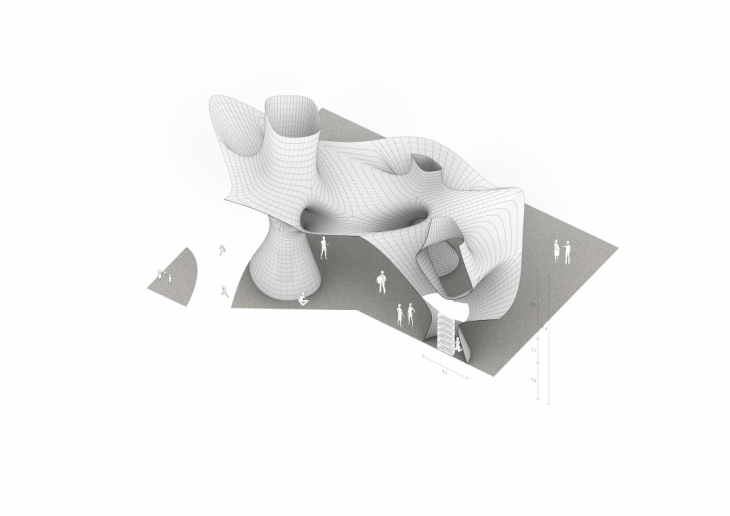
Axonometric- prototype section
Evaluations
Water runoff
Through a water runoff simulation, the water-guiding capability of our surface was evaluated. Limited corrections were needed to ensure that all the condensed water is guided towards the tank.
Solar
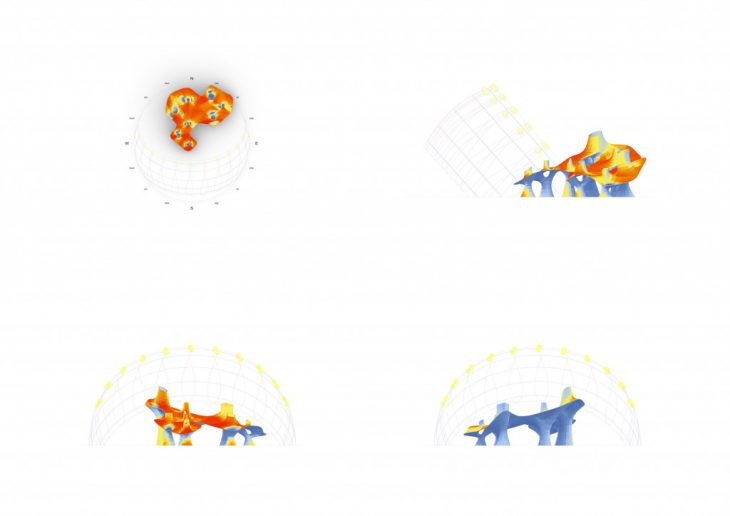
FARMING
Vegetables
Lettuce
Cabbage
Spinach
Tomatoes
Herbs
Mint
Basil
Fruits
Strawberries
The crops were selected because they have been proven to grow well in vertical farming systems. It was also important to select a variety of different crop types, in order to familiarize the public with as many different farming techniques as possible.
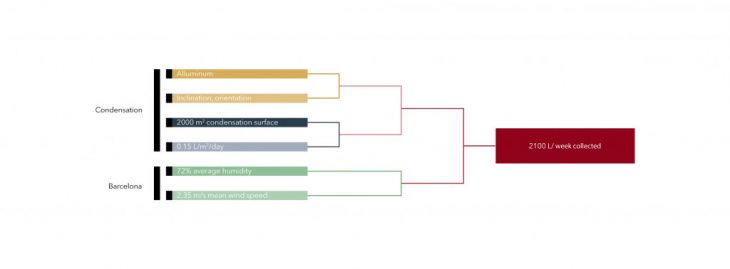
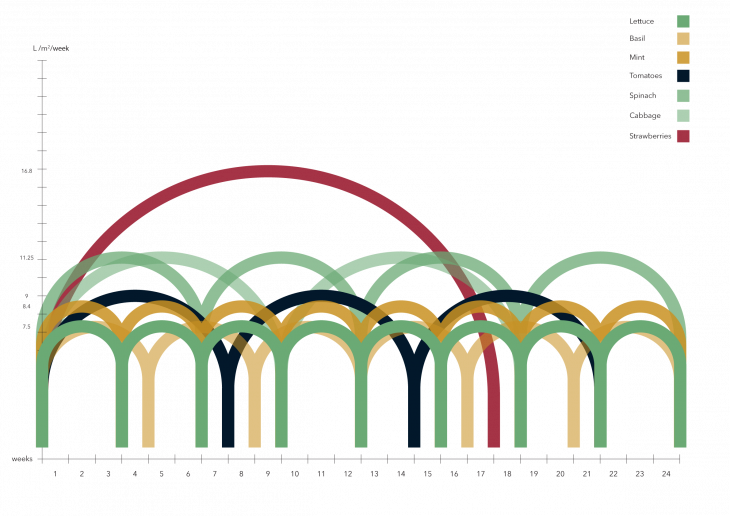
Crop turnover time and water needs
By examining the turnover time of the selected crops, as well as their average water consumption, the crops can be categorized based on their efficiency. Crops with a combination of low water needs and fast turnover time (eg lettuce) will be prioritized and given a bigger share of the available farming area.

Crop distribution
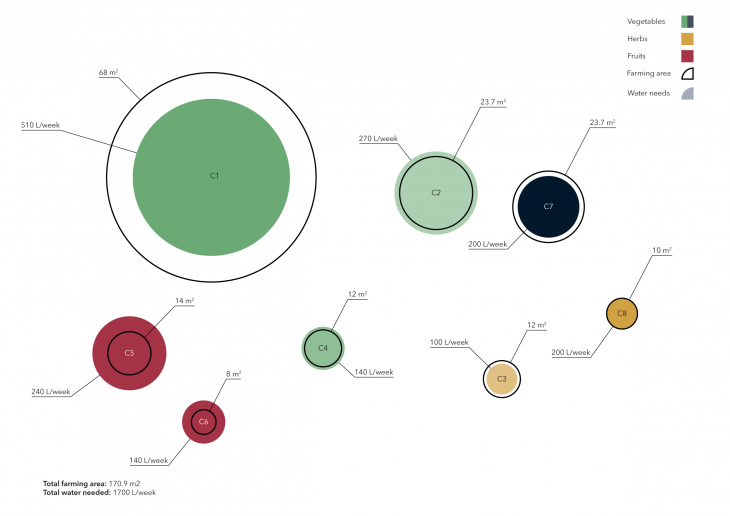
Farming area and water needs per chimney
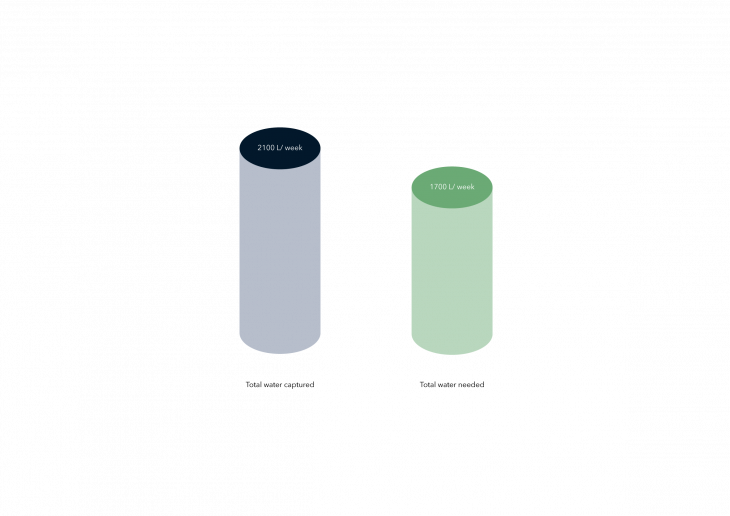
Total water production and needs
FINAL
Renders
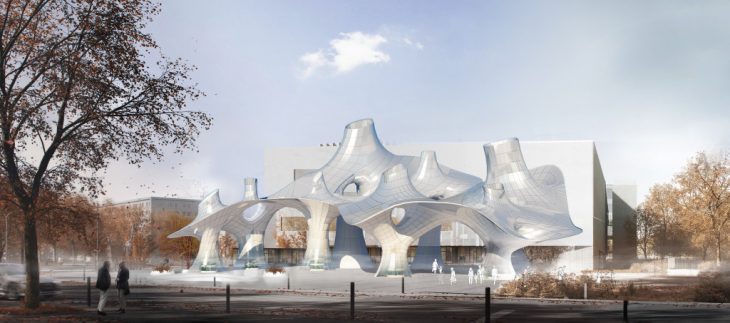
View from Calle Pere IV
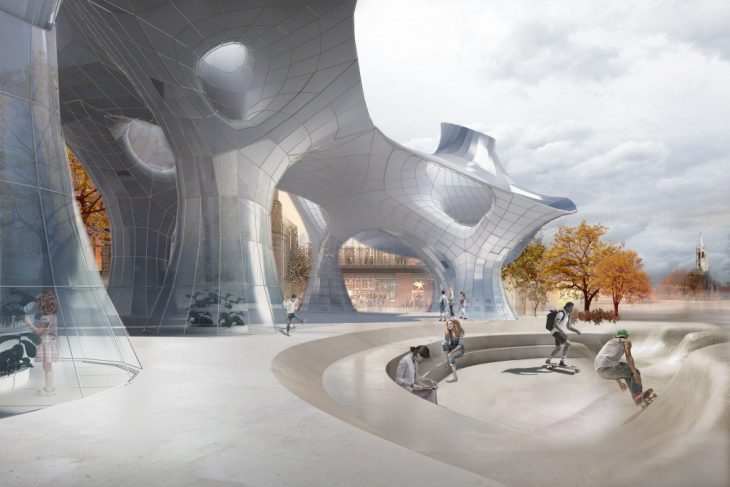
Close-up view
PROTOTYPE
Laser cut
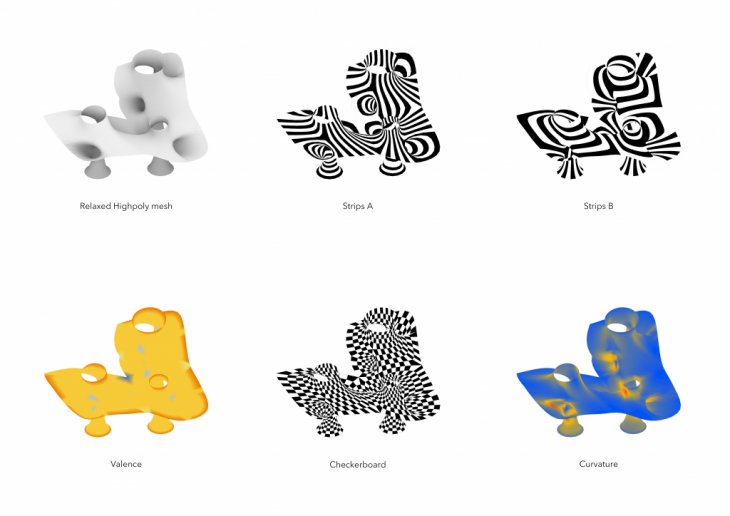
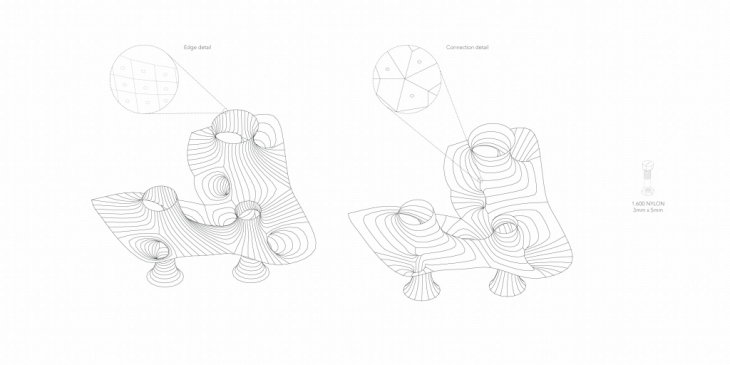
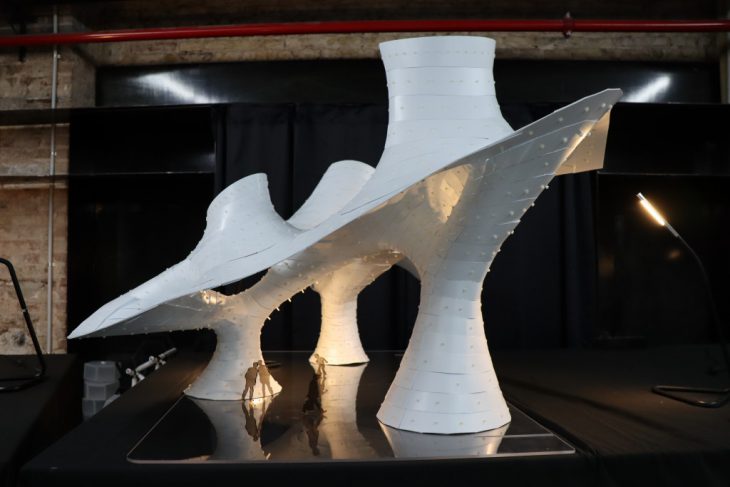
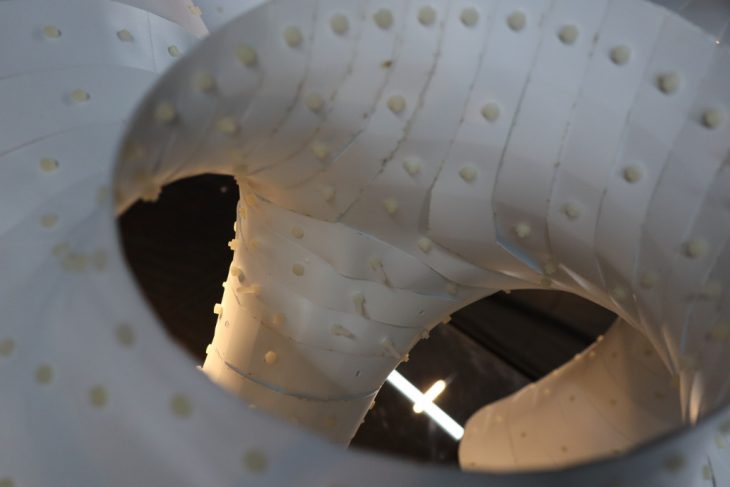
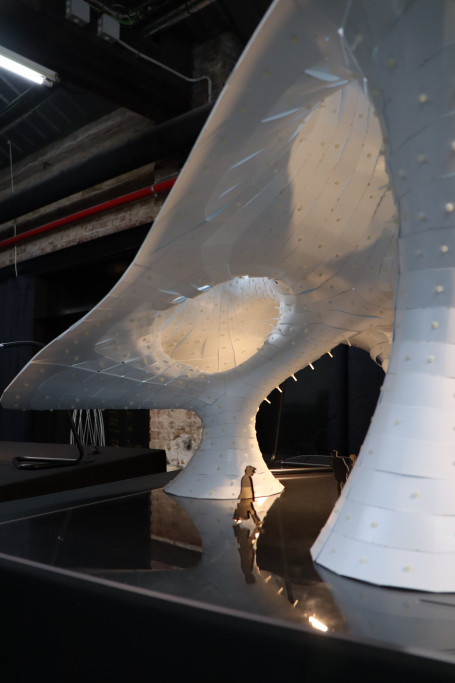
3d printed
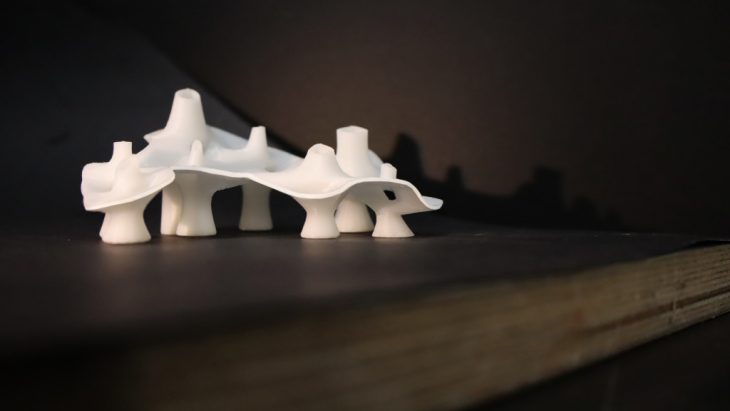
Video
</p>
Air Well// from drop to fruit is a project of IAAC, Institute for Advanced Architecture of Catalonia developed in the Masters of Advanced Architecture 2020/21 by Students: Christos Trompoukis, Elizaveta Veretilnaya, Liang Mayuqi, Tullio Polisi, Victoria Fedorova, and Ziying Zeng, Faculty: Rodrigo Aguirre, Ivan Marchuk, Ahbishek Sharma and Guest Faculty: Alessio Erioli, Alex Mademochoritis, Arian Hakimi, Andrea Graziano
